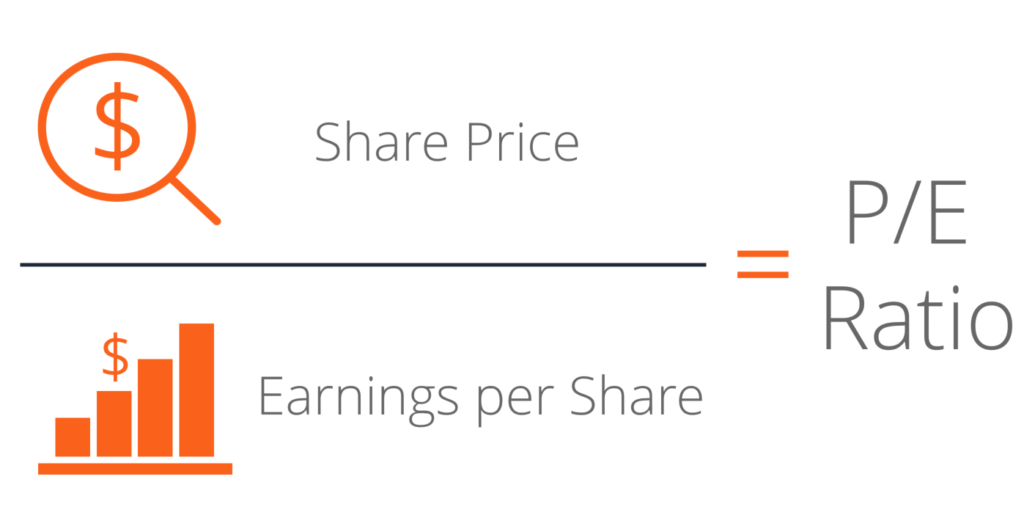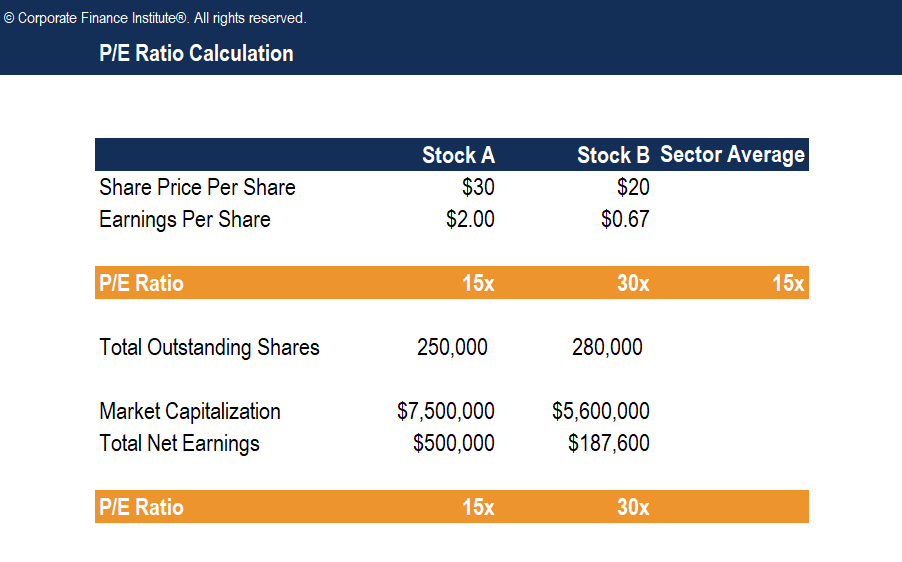
The Price Earnings Ratio (P/E Ratio) is the relationship between a company’s stock price and earnings per share (EPS). It is a popular ratio that gives investors a better sense of the value of the company. The P/E ratio shows the expectations of the market and is the price you must pay per unit of current earnings (or future earnings, as the case may be).
Earnings are important when valuing a company’s stock because investors want to know how profitable a company is and how profitable it will be in the future. Furthermore, if the company doesn’t grow and the current level of earnings remains constant, the P/E can be interpreted as the number of years it will take for the company to pay back the amount paid for each share.

Looking at the P/E of a stock tells you very little about it if it’s not compared to the company’s historical P/E or the competitor’s P/E from the same industry. It’s not easy to conclude whether a stock with a P/E of 10x is a bargain or a P/E of 50x is expensive without performing any comparisons.
The beauty of the P/E ratio is that it standardizes stocks of different prices and earnings levels.
The P/E is also called an earnings multiple. There are two types of P/E: trailing and forward. The former is based on previous periods of earnings per share, while a leading or forward P/E ratio is when EPS calculations are based on future estimates, which predicted numbers (often provided by management or equity research analysts).
P/E = Stock Price Per Share / Earnings Per Share
P/E = Market Capitalization / Total Net Earnings
Justified P/E = Dividend Payout Ratio / R – G
R = Required Rate of Return
G = Sustainable Growth Rate
The basic P/E formula takes the current stock price and EPS to find the current P/E. EPS is found by taking earnings from the last twelve months divided by the weighted average shares outstanding. Earnings can be normalized for unusual or one-off items that can impact earnings abnormally. Learn more about normalized EPS.
The justified P/E ratio is used to find the P/E ratio that an investor should be paying for, based on the companies dividend and retention policy, growth rate, and the investor’s required rate of return . Comparing justified P/E to basic P/E is a common stock valuation method.
Investors want to buy financially sound companies that offer a good return on investment (ROI). Among the many ratios, the P/E is part of the research process for selecting stocks because we can figure out whether we are paying a fair price.
Similar companies within the same industry are grouped together for comparison, regardless of the varying stock prices. Moreover, it’s quick and easy to use when we’re trying to value a company using earnings. When a high or a low P/E is found, we can quickly assess what kind of stock or company we are dealing with.

Companies with a high Price Earnings Ratio are often considered to be growth stocks. This indicates a positive future performance, and investors have higher expectations for future earnings growth and are willing to pay more for them.
The downside to this is that growth stocks are often higher in volatility, and this puts a lot of pressure on companies to do more to justify their higher valuation. For this reason, investing in growth stocks will more likely be seen as a risky investment. Stocks with high P/E ratios can also be considered overvalued.
Companies with a low Price Earnings Ratio are often considered to be value stocks. It means they are undervalued because their stock prices trade lower relative to their fundamentals. This mispricing will be a great bargain and will prompt investors to buy the stock before the market corrects it. And when it does, investors make a profit as a result of a higher stock price. Examples of low P/E stocks can be found in mature industries that pay a steady rate of dividends.
If Stock A is trading at $30 and Stock B at $20, Stock A is not necessarily more expensive. The P/E ratio can help us determine, from a valuation perspective, which of the two is cheaper.
If the sector’s average P/E is 15, Stock A has a P/E = 15 and Stock B has a P/E = 30, stock A is cheaper despite having a higher absolute price than Stock B because you pay less for every $1 of current earnings. However, Stock B has a higher ratio than both its competitor and the sector. This might mean that investors will expect higher earnings growth in the future relative to the market.
The P/E ratio is just one of the many valuation measures and financial analysis tools that we use to guide us in our investment decision, and it shouldn’t be the only one.

Enter your name and email in the form below and download the free template now!